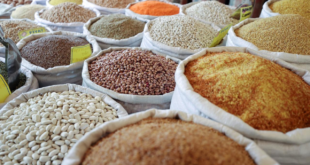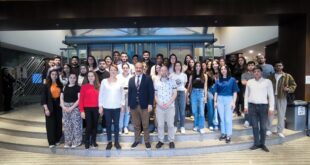Glyphosate use must be curbed, but prohibition may have adverse effect…
WUR researchers Violette Geissen and Pieter de Wolf stress that the environmental risks of using chemical pesticides must be reduced as much as possible. However, whether the available alternatives are better for humans, the environment, soil life and the climate is highly uncertain. This was made clear by the scientific reflections sent to the House of Representatives.

Geissen and De Wolf participate in the round table dialogue in the House at the behest of the Ministry of Agriculture, Nature and Food Quality (Dutch acronym LNV) in response to the European Committee’s proposal to extend the approval for glyphosate with another ten years. EU member states must decide whether they support the proposal in the coming months.
Wageningen University & Research (WUR) conducts much field research on how to make agriculture more sustainable. Moreover, WUR researchers join hands with colleagues from various fields to curb the use of glyphosate and other pesticides. In response to the question of whether or not the substance should be permitted into Europe, the LNV House of Representatives committee has initiated a round table dialogue to inventory the various societal opinions. Geissen and De Wolf have been asked to discuss glyphosate from an environmental and agricultural perspective.
Risks for humans and the environment
Glyphosate use negatively impacts ecosystems, including aquatic and soil life. There are also indications that the substance poses a health risk for humans, which have not been included in the assessment of the substance. It may, for example, cause changes in behaviour and in the intestinal microbiome. ‘Studies have shown that glyphosate is omnipresent in the ecosystem and the human body. Exposure through the environment matches the exposure resulting from ingestion’, says Violette Geissen. She is a professor of soil degradation and land use at Wageningen University. She coordinates the transdisciplinary European SPRINT research project that studies the dispersion and effects of pesticides.

Geissen has doubts about the EFSA (European Food Safety Authority) risk assessment. ‘The EFSA has failed to include the precautionary principle in its risk assessment. Key exposure routes and risks, such as the dispersion of glyphosate and its most stable degradation product AMPA through the atmosphere and house dust, were not included in the considerations.’
The Wageningen experts underscore the need to curb the use of glyphosate. At the same time, some colleagues fear that completely banning the substance in the near future may not be an improvement for farmers. Crop farmers will likely switch to existing chemical alternatives, which are less effective and will therefore be used more intensively. Many of these alternatives are not necessarily better for humans or the environment. Furthermore, many currently available non-chemical options (ploughing, for example) have adverse effects on soil life and efforts to mitigate climate change.
Location and plant-specific approach
″We must prevent achieving the precise opposite of what we want to achieve, which is a reduction in the use of substances″, says Pieter de Wolf, a senior field researcher and project leader of the Farm of the Future, a WUR project in Lelystad aiming to help farmers make their business more sustainable. ″We do not exclude the use of glyphosate and other pesticides at the Farm of the Future. But we only use them if there is no proper alternative. We prefer to opt for a location or plant-specific approach using substances with the lowest possible impact on the environment. We aim for the lowest possible emissions. This approach significantly reduces the use of pesticides and thus of the environmental risks, although there are annual differences.″

Technology must be developed further
De Wolf and his colleagues thus state that if we really want to significantly reduce the use of herbicides such as glyphosate, a focus on precise location-specific, and, even better, plant-specific, application is most effective. At the same time, they say that the required technology for this approach is insufficiently well-developed nor extensively available for farmers.
″This calls for additional efforts in developing and applying technology capable of identifying and treating weeds and groundkeepers among crops using cameras, sensors and Artificial Intelligence. Non-chemical methods -mechanical, thermic, electric and optic- also merit further development and testing. A key consideration in these alternatives is the energy they require and how they impact the soil.″
Source: Wageningen University & Research
 THE GLOBAL WINDOW OF TURKISH FOOD AND AGRICULTURE The Global Window of Turkish Food and Agriculture Sector
THE GLOBAL WINDOW OF TURKISH FOOD AND AGRICULTURE The Global Window of Turkish Food and Agriculture Sector









